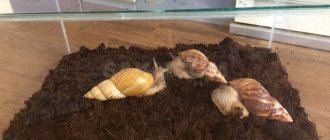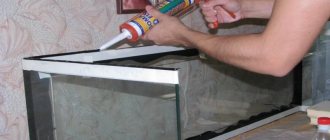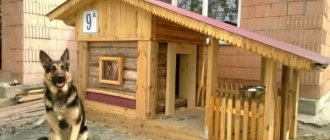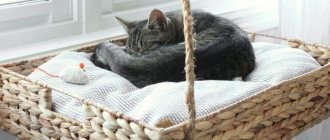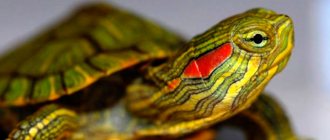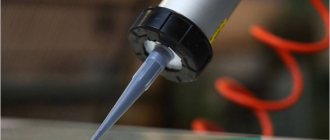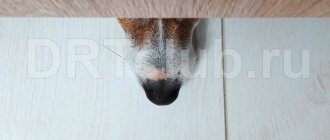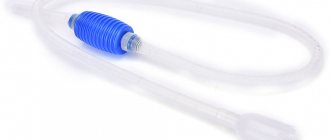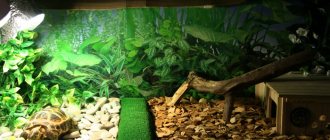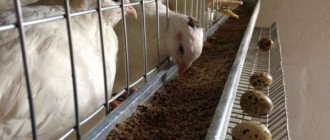Turtles in their natural environment are true long-livers. The age in captivity usually does not exceed 40 years. They also need to live with dignity - in a good house, in a comfortable environment, with proper care. The turtle's corner must be equipped with the latest technology: the reptile must have the opportunity to walk in a designated place, have a healthy diet, and be active (to the best of its strength and ability to avoid the development of rickets). You can design a terrarium for a land turtle with your own hands.
This reptile is a fairly heat-loving animal; it is very sensitive to temperature changes and the appearance of drafts. Therefore, the pet should not be placed on the floor, next to the passage. This advice is also relevant for another part - so that dust does not accumulate in the house. In home conditions, you can use a horizontal terrarium. It is convenient to design it with your own hands.
In this case, such indicators as the size of the reptile, the size of the future enclosure, and the requirements for caring for the turtle species are taken into account. Although, in most cases, these requirements are universal. Let's try to figure it all out.
Why should a turtle have a cozy home?
Today there is a lot of controversy among reptile lovers about this. Some argue that unlimited space throughout the apartment allows the turtle to independently choose a comfortable place for itself.
And others categorically condemn such content, explaining this by the negative impact of floor dirt on the health and life expectancy of the animal.
Did you know? Turtles have gone down in history as the most ancient reptiles. Evidence of this is found in the remains that are more than 220 million years old. Modern scientists suggest that prehistoric reptiles were distinguished by their enormous size, thick lower layer of shell and teeth. In diameter, such an animal reached about 3.5 meters.
Experts consider it unacceptable for a heat-loving reptile to wander freely around the human monastery for several reasons:
- such walks are fraught with injury to the turtle;
- the absence of a terrarium will greatly affect her health, since without a personal abode she will not be able to receive enough moisture and light;
- Walking around the apartment, the reptile will look for a secluded corner. As a rule, in such hard-to-reach shelters there is a lot of dust and a high probability of drafts;
- If you don’t arrange a corner for your pet according to his preferences and requirements, he won’t be able to dig the soil. And this habit is inherent in the turtle by nature;
- To keep such fauna representatives indoors, it is important to provide them with solid objects. In nature, they love to chew shells and chalk, and in an apartment they will look for anything that gets in their way. It is possible that among this there will be things dangerous to the pet’s health or valuable to the owners.
If we weigh all the pros and cons of freely keeping land turtles, the conclusion arises about the need to build a comfortable terrarium in which the ward will be happy in his own way.
Did you know? Archelon is considered the largest prehistoric turtle. The skeleton belonging to him, which archaeologists discovered, reached a diameter of more than 4 meters. It is estimated that the weight of this animal was 2.2 tons.
Ventilation
Ventilation should be provided in the terrarium, which will facilitate the flow of oxygen, sufficient air exchange and eliminate unpleasant odors arising from the turtle’s waste products. To do this, make one ventilation hole in the reptile's home. It is not recommended to do them anymore, as this may cause drafts to appear in the terrarium.
The ventilation hole should be made at the stage of creating blanks for the terrarium. Having made a hole, be sure to decorate it with a ventilation partition.
Design options
Terrariums can have different designs, each of which has its own special qualities.
Wooden structure
Most often, at home, these pets are kept in ordinary wooden boxes of appropriate sizes. This is a simple design that is easy to build and does not require special materials.
In addition, such items can always be found in a barn, garage or storage room. If you can’t find a suitable container anywhere at home, you can buy it inexpensively ready-made.
Wood and glass combination
Many breeders improve wooden structures by replacing one of the walls with frosted plexiglass. It is important not to forget about the ventilation holes.
You will be interested to learn about the features of keeping a land turtle, snapping turtle, Central Asian land turtle, fringed turtle, swamp turtle, Chinese turtle, snapping turtle, red-eared turtle.
In such variations, the floor is made of thin plastic or linoleum or laminate, and the roof has an upward opening or retractable lid.
Plastic container
This is an inexpensive, but very comfortable house for the ward. Its main disadvantage is the difficulty of installing a lamp to heat a turtle. It is important that this item does not threaten her life and provides the necessary amount of heat and light.
An alternative is to use commercial plastic rodent cages.
Did you know? All turtles are long-lived. In natural conditions they can live for more than a hundred years. For example, the oldest armored reptile in Europe is still considered to be a ward of the Galapagos Zoo named Harrient, who died in 2006. Then the animal turned 250 years old. But the most interesting thing is that on his life’s path he had the opportunity to meet Charles Darwin himself, who brought him to the European expanses
.
Floor pen
According to experts, this is not the best option for keeping a turtle. But at first, until the question of her permanent place of residence is resolved, you can fence off a corner for the ward right on the floor in the apartment.
The height of this fence should correspond to the size of the resident (we will talk about this in more detail later). It is important that the floor is insulated, otherwise the reptile will get sick and die. It cannot be kept on bare tiles.
It is advisable to cover the equipped pen with a piece of linoleum or a rubber mat. Remember that land animals do not respond well to open areas. The temperature in the room with the pen should not fall below +25 degrees.
Aquarium
Turtles adapt well to being kept indoors in a regular aquarium for aquatic fauna. They can provide an area for lamp heating, as well as ventilation holes. The disadvantage of this option is the high cost of the design.
Shelf in the sideboard
Not a bad option for an armored ward, but its arrangement requires a lot of effort on the part of the owner. It is important to ensure good mounting of the heating lamp, and this design must also be safe. Give preference to wide and high shelves so that the beast does not get burned.
Important! A turtle terrarium must have small pebbles. If the animal shows a tendency to swallow pebbles, immediately replace the mound with larger stones.
Additional devices for the aquarium
All of the above is mandatory. In addition, aquarists equip containers with additional elements. They are also made from safe materials that do not emit toxic substances.
UV sterilizer
An ultraviolet sterilizer is necessary to disinfect water. To make it, you will need a lamp of the appropriate rating and a sealed casing. The structure is powered from the power supply network.
Automatic feeder
If there is only one aquarium in the house, then there will be no problems with feeding the inhabitants. If there are several of them, and the need to leave periodically arises, you will need an automatic feeder. It can be made from any inclined plane on which feed is constantly supplied, and an element that will create vibration. It could even be a mobile phone. By calling your phone, you can activate a vibration alert, which will cause the food to spill out into the water.
Samp
Sump is used for high-quality water purification and preparation. Installed next to the aquarium. It is better to purchase a ready-made version, but if you wish, you can do it yourself. The complexity of the design is determined by the goals. As a rule, several stages of purification and water heating are used.
Aerators and sprayers
Thanks to them, it is possible to reduce the diameter of the bubbles. As a rule, it is placed at the bottom of the aquarium. This can be one or more dots, or a stripe that creates a curtain of bubbles. The following materials are suitable for production:
- Tubes They can be rolled into any shape. To eliminate buoyancy, sinkers are used.
- Porous stones, such as sandstone.
- Branches of trees such as rowan.
When arranging, you should consider the method of subsequent cleaning.
Snail trap
Very often, the number of snails in an aquarium exceeds the desired levels. Manual cleaning is not only inconvenient, but also not particularly effective, given that after turning on the lighting they hide in secluded places. Therefore, if you decide to make an aquarium with your own hands, you should think about this point.
As a rule, a design is used that allows snails to freely pass inside, but prevents them from exiting. The role of limiters is performed by plastic strips. Vegetables are suitable as bait.
Fridge
The temperature of the water in the aquarium does not always need to be increased. In some cases, its reduction is required. Refrigerators are used for this purpose. The simplest option is household appliances in the form of an air conditioner. Air and water cooling systems are also suitable. The complexity of the design and its power are determined by the parameters of the aquarium.
Making a skimmer
External mounted skimmer
Skimmers are also designed to purify water from contaminants. They can be used both as part of a filter and as a separate standing structure. It is a flask where water from the aquarium is supplied from above, then it passes through a wooden filter and is cleaned of excess bubbles (foam) and impurities. At the top, the water is treated with ozone and then fed back into the container.
Selection of materials for construction
Most often, terrariums for land turtles are made of natural wood, non-toxic plastic and glass.
Each of these materials has its own advantages and disadvantages:
- For example, plastic products are very light . This material is easy to work with, it is accessible, inexpensive and easy to maintain.
- One of the sides of the abode is usually made of glass - the one through which you will feed your reptile. For this purpose, ordinary or organic glass is used. It is worth considering that in most cases turtles do not notice a transparent barrier, which is why they hit their shell against it. Therefore, experts advise not to expose the animal to injury and to decorate the glass walls with a natural terrarium background.
- Wooden structures are inferior in their heaviness , but deserve attention for their practicality and endurance. Many breeders combine these materials, taking into account the comfort of the pet and the external decorative effect of the structure.
- Most often, turtles are kept in square or rectangular houses made of wood and glass . Variations are practical, where the glass covers can not only be moved aside, but even removed from the grooves. In some structures they are simply attached with magnets.
Important! Proper housing for a land turtle includes a varied diet, weekly swims in warm water and summer walking outside (no more than 1 hour a day)
.
Decor
Once you have completely assembled the structure of the dwelling for the land turtle, you can move on to the final stage - designing the terrarium. It is advisable to cover the bottom with a special primer. In addition, it is necessary to provide lighting, install a bowl for feeding the pet and decorate the terrarium with decor.
As can be seen from the above, creating a terrarium with your own hands is a fairly simple and quick undertaking. The main thing in the manufacturing process is a responsible approach and careful attention to detail.
Tools and materials required for work
The most practical and inexpensive design is made of plywood and plexiglass.
It will also be useful for you to find out why a turtle does not open its swollen eyes, how long a turtle lives at home and in the wild, what turtles eat, why and how to inject Eleovit into turtles.
In order to build a homemade terrarium for your pet, you will need:
- saw or jigsaw;
- a sheet of plywood from which 4 parts will need to be cut, measuring at least 90 x 50 cm (can be replaced with plastic);
- glue gun or screws for fastening parts;
- thin wooden strips for securing the walls;
- corners for side walls;
- 2 slats with grooves for glass;
- drill;
- silicone glue;
- plastic covers to cover ventilation holes;
- lamp for heating the animal (it is advisable to provide a special protective lampshade for it);
- feeders;
- drinking bowls;
- a piece of linoleum on the floor;
- special bedding (soil);
- swimsuit;
- hygrometer;
- thermometer.
Where to begin?
First of all, you need to prepare the required amount of materials for making the terrarium. To cut out blanks for your future home, you should also select the appropriate tools. For a glass and plywood terrarium, you will need a regular hacksaw and a glass hacksaw. In addition, you should definitely prepare the glue with which the structural parts will be attached.
To make a terrarium, you may also need additional materials, such as film and soil to cover the bottom of the reptile's housing. You can also use various materials for decoration: large stones, twigs or driftwood.
Necessary requirements and dimensions
If turtles lead a silent lifestyle, do not think that they will be happy with any conditions that you provide them. Please note that by bringing such a ward into your home, you will be dealing with a very demanding reptile.
Do-it-yourself aquarium-terrarium for a turtle: video
Important! It is strictly forbidden to feed the turtle with piece food for cats and dogs. It is also detrimentally affected by keeping it in a small terrarium, the lack of special soil and regular walking.
The first thing you need to pay attention to is the size of the structure. Experienced breeders advise calculating the required area, guided by the following rule: the length, height and width of the structure should be increased from the dimensions of the reptile by 2 - 6 times.
That is, if the diameter of a turtle is 10 centimeters, then the parameters of its abode should reach half a meter. This also applies to the height of the terrarium, which is also measured taking into account the length of the animal. In cramped conditions, this value can be multiplied by 2.
If you plan to keep several pets, then you will have to calculate the area for them for each one separately. For a couple of ten centimeter household members, you need a cubic structure with sides of about a meter. Remember: the more space, the more comfortable your pets will be.
The material for a turtle's home must be selected based on its size and the endurance of the ward. That is, small structures for heat-loving animals can be built from wood, while plastic is suitable for cold-loving animals.
Also consider the possibility of thermal insulation of the walls using polystyrene foam. Ideally, turtles that like the cold should be kept in separate rooms from those that prefer a lot of heat.
If this is not possible, you will have to build a special terrarium stand, placing more hardy living creatures in the lower tiers.
Did you know? Sea turtles have a unique feature that is rightfully considered a record among all spinal animals. They tend to hold their breath for more than 10 hours.
Each turtle breeder should bring the home conditions of his charges as close as possible to natural ones. Only then are they guaranteed good health and longevity.
Lid
A similar detail may be needed if you have other animals living in your house that could harm the turtle. In this case, the lid on the terrarium will protect your pet from danger.
The lid can be made from absolutely any materials. However, when choosing a suitable option, pay attention to the fact that under the cover there will be an electric lamp designed to illuminate the terrarium. Therefore, it is better for you to give preference to fire-resistant materials, such as glass or some kind of metal. When attaching the lamp, make sure that it does not touch the walls and lid of the terrarium structure.
DIY terrarium for a land turtle
Everyone can save on the purchase of comfortable and durable housing for an armored household. After all, the construction of a terrarium does not require special knowledge and skills. Veterinarians advise that for the psycho-emotional comfort of the turtle, three walls should be made of wood or non-toxic plastic, and one wall should be made of organic glass.
In the terrarium you can also keep a chameleon, tree frog, salamander, aquarium toad, tarantula spider, African snails, monitor lizard, centipede, gecko, royal python, newt, crocodile, iguana, butterflies, African hedgehog, sand boa, corn snake.
Terrarium for a land turtle: video
How to make a terrarium from a closet
A ready-made bookshelf with glass sliding doors or a furniture wall is perfect for this:
- Choose a durable and wide shelf that will fit the size of your ward. Do not forget to take into account the safe height of this structure in conditions of lamp heating.
- If the factory design does not provide a separate door, you need to use a tape measure to measure its dimensions and cut them out of glass yourself with a glass cutter.
- These parts are attached to special plastic grooves or glue.
- It is important to provide ventilation and a lid to open the structure.
- For the comfort of the animal, its back wall should be covered with a natural background characteristic of the natural environment of turtles.
- Also, among the details of the terrarium, it is necessary to provide a separate shelter for the pet. This can be an ordinary flower pot or a wooden structure that can accommodate a reptile. Some breeders make two-story buildings, where there is a house below and a heating area at the top.
- At the end of construction, install a heat lamp. It should provide enough light and warmth, but not harm the animal or your property.
- Cover the floor in the turtle's house with hay or sawdust, and lay out small pebbles in the rest of the area.
- Place feeding and drinking utensils away from the lamp.
Did you know? Turtles can go hungry for a long time. For example, the elephant species goes without food for 18 months. Considering these features of reptiles, ancient sailors took them on voyages as long-term canned food.
.
A terrarium from a cabinet is very simple to build, but its significant drawback is the complexity of arranging lamp heating. Often, incorrect placement of this device leads to injury to the animal and damage to the construction material.
How to convert an aquarium into a terrarium
Since turtles love water treatments, having their own pool in the terrarium will not hurt them. Please note that the type of water depends on the variety of your ward.
Experts advise to provide in advance that each resident of the turtle house has at least 100 liters of volume. The height of the home should not be lower than 40 centimeters. This is necessary so that the pet has the ability to freely maneuver and swim in any direction.
The content of such a structure has many requirements. The water in the aquarium should be changed every 5 days, but it is strictly forbidden to renew the entire volume. Only a third needs to be replaced in order to maintain the microbalance of the aquatic environment.
Did you know? Many people mistakenly consider turtles to be the slowest creatures on the planet. In fact, they are very agile in water, in which they can reach speeds of up to 35 kilometers per hour. On land, their mobility decreases to 15 km/h. It has been noted that the colder the air temperature, the slower the land reptile will crawl.
To convert an aquarium into a full-fledged terrarium, you should adhere to this technology:
- Choose a glass vessel that fully complies with the recommendations described above.
- Wash the aquarium thoroughly, removing possible dirt and mold (this applies to containers that have already been in use);
- Cover 3 walls of the container with a photon that corresponds to the pet’s natural habitat.
- Using a jigsaw, cut a sheet from plywood or plastic that will fit in the container and cover one third of its length.
- Glue (or attach with screws) 4 slats to the cut out part, which will act as supports. Their length should only rise a few centimeters above the water level.
- Glue together a side for a piece of land from round pebbles and, in the same way, build a spherical structure to shelter the reptile. It is important that on land there is space left for her to warm herself under the lamp.
- Using wooden planks, the length of which is slightly less than the width of the aquarium, use glue to build a ladder so that the animal can descend along it into the water.
- Place about 3 centimeters of sand and pebbles on the bottom of the aquarium. You don't have to plant algae because turtles eat it.
- Install the lamp above the structure so that the light is not located directly above the person's food.
- Place hay bedding in the shelter.
Important! When walking your turtle outside, do not allow it to eat poisonous or medicinal plants. Contact with other pets is also contraindicated.
.
Plastic terrarium for turtle
If you prefer to build an abode for your pet from plastic, first decide on the required dimensions of the structure and prepare the necessary material.
This solution is good because if mistakes are made during the assembly process, the frame can be easily disassembled using ordinary strong thread. It is carried out in places where parts were fixed with silicone glue.
Execution sequence:
- Using a jigsaw, cut out 5 sheets for the walls and bottom. We calculate their sizes according to the above recommendations.
- We lay the bottom and apply silicone glue to the joints of the side and rear walls.
- Place the back wall on the bottom and fix it until the glue hardens. If the material does not fit well, you can use purchased corners for plastic products. You can purchase them at any hardware store.
- We assemble all the other walls in the same way. For better adhesion of the glue, experts advise spraying the connected parts with water from a spray bottle.
- When the structure is dry, use a blade to remove excess glue from the parts and cover all seams with sealant so that spilled water does not destroy the material.
- Decorate the walls with a natural background, familiar to a turtle.
- Set up a home for your pet inside. Its standard attributes are: covered (you can take a flower box of the appropriate size and make an entrance in it or a piece of a hollow wooden block), pebbles, hay bedding, sand, a food bowl and a drinking bowl.
- Place a lamp over the area where the sand is scattered.
- Cover the structure with a glass sheet of appropriate size on top. It will help keep you warm inside and allow you to keep an eye on your ward.
Important! It is not recommended to use thermal cords and thermal mats to heat terrariums. 60 W incandescent lamps are most suitable for this purpose. They are placed in the corner, thus dividing the terrarium into warm and cold zones. In the first option, the air temperature should reach 28-32 degrees day and night, and in the second - 22-24 degrees
.
How to make a wooden terrarium
This option is convenient due to its wide space for the client and the possibility of comfortable installation of lamps. In such a design, it is easy to build a wide, high shelf so that the animal can climb up a ladder for better heating.
Also, for convenience, you can provide a second house there. If desired, a swimming pool can be attached at the bottom of the structure. It all depends on your imagination, capabilities and preferences of the pet.
Technology for building a basic box:
- Cut a base measuring 90x50 cm from a plywood sheet.
- Using a glue gun, attach the strips around the perimeter of this part to which the walls will be attached.
- We fix the side walls to the corners with screws. Thus, at this stage of construction we have a bottom with 2 side walls and 1 back.
- Cover the bottom with another sheet of plywood. This is necessary so that the slats do not create discomfort for the client, and the floor is level.
- Using a glue gun (screws), we attach a strip with grooves for glass on the front side of the floor.
- On the side we make one ventilation hole with a diameter of 3 mm. They are no longer needed, since in this case the animal will be exposed to drafts. If you decide to use a mesh made of perforated aluminum sheet as ventilation, then its size depends on the location. For example, the top ventilation should be a third of the width of the structure, and the bottom should be made in the form of a pocket 20 - 50 mm wide.
- We cut out a valve of the appropriate size from plastic and lightly cover the ventilation, preventing insects and dust from entering inside.
- Treat all wooden parts twice with hot drying oil, then coat with furniture varnish. This treatment will protect the structure from dampness.
- We install the lamp. For incandescent appliances, a lampshade must be provided. It is important that this item is not placed too low above the surface where the turtle will be crawling. If the air in her house warms up to more than +25 degrees, then she is in danger of overheating.
- Decorate the terrarium with bedding, pebbles, shells, and arrange a feeding and watering area. Cover the floor with sawdust or hay.
Important! When using glass parts in the manufacture of homemade turtle terrariums, experts recommend giving preference to material 4-5 mm thick.
Gluing glass blanks
Silicone sealant is best suited for gluing structural parts. It will not harm either fish or plants, unlike acrylic, butyl, acid, and bitumen adhesives. To glue the workpieces together, it is necessary to apply silicone sealant in drops along the perimeter of the bottom, leaving beacons for subsequent filling. Next, you need to wait about two hours and cut off the hardened sealant so that a layer up to two millimeters thick remains.
Now you can attach and glue the front wall, then attach and seal the end blanks and the back wall. Excess silicone should be removed with a sponge or damp cloth, or most conveniently with the sharp corner of a plastic spatula.
To ensure a safety margin, it is recommended to apply an additional layer of sealant to the joints after two hours. The product must stand for an hour, then the masking tape is removed. The seams of the aquarium are cleaned with a utility blade.
How to make a dollhouse with your own hands - a detailed description of the process, photo examples, tips
DIY potato crafts for kindergarten and school - photo ideas, master classes, tips
Where to put a terrarium for a turtle
The correct location of the terrarium is equally important. It should not be placed in drafts or direct sunlight. This is a common mistake made by beginners who think that this way they can provide the reptile with enough light and warmth.
But in such conditions, with intense solar heating, the vents cannot cope with the high temperature. If the structure is made of glass, the thermometer in it may show 400 degrees. As a result, the animal finds itself in a hellish trap with no chance of survival.
Experts advise placing the structure in the northern part of the house, where it is always dark: it should not be an attic or attic room. It is best to prefer a basement or basement rooms with excellent heat and moisture insulation. In a small room, the corner behind a blind door would be ideal for a terrarium.
Did you know? Today, as a result of active fishing, turtles are on the verge of extinction. Every third armored reptile dies due to its use by people in cooking or folk medicine.
Which glass is better
Choose glass of M1 quality class. The window type of material is not suitable because it is fragile, poorly polished and creates a distorted effect. The ideal option would be display glass. It is durable, can withstand increased loads and is applicable for the manufacture of volumetric structures. Also, you will not face the problem of cloudy appearance and visual distortion.
You should not buy already used canvases, and to ensure uniform redistribution of load pressure, consider installing stiffeners.
The best fastening will be ensured if the edges are left unsanded.
How to set up a terrarium for land turtles
We have already partially touched on this topic, but since it is in this area that breeders often make gross mistakes that lead to the death of animals, we will dwell in detail on every detail in the turtle house.
A special place for this kind of wards is given to the ground. It must be used regardless of the material from which the terrarium will be made. Without special coating, land reptiles suffer from deformed paws and abraded claws. To prevent this from happening, pour regular river sand or sawdust into the tank .
Many breeders who have been dealing with turtles for years advise keeping the pet’s living conditions as close as possible to its natural environment. Therefore, preference should be given to pebbles and sand .
Ideally, it is advisable to initially cover the floor of the structure with a bathroom rug (it will absorb excess moisture), and make a mound of soil on top. Use both materials in one design. The animal will burrow in the sand and sharpen its claws on the pebbles.
Did you know? The smallest turtles today are considered to be the inhabitants of South Africa - Cape speckled turtles. Their body length barely reaches 10 centimeters and weighs 140 grams.
The next important element in the terrarium is the heating device. It is cheaper to use conventional lamps up to 60 W, but UV devices have also proven themselves to be effective. Their advantage is to replace sunlight and heat, which these heat-loving reptiles so lack.
It is important to take into account that such objects should be located above the animal’s shell at a distance of 20-30 centimeters. At night, appliances can be turned off. But the best option would be to install an automatic relay, which will make it easier to control the lighting mode.
In the area where the lamp shines, it is advisable to place bowls for water and food for the ward, and in the cold area there should be his shelter house. To do this, you can use a regular wooden (plastic) box with an entrance and ventilation.
The feeder should have no sharp corners so that the pet does not get injured. In addition, it needs to be dug into the ground so that the food does not turn over. It is preferable to choose ceramic products for such purposes. The same requirements apply to drinking bowls.
Did you know? Of all the representatives of this genus of fauna, snapping turtles are considered the most aggressive and dangerous. They attack snakes and waterfowl. There have been cases when these reptiles have chewed off the fingers of divers. Note that they do not have teeth, but they have a powerful beak that can even bite off a piece of wood.
To control the temperature in the terrarium, experts advise equipping it with thermometers in the areas where the lamp works and where the shelter is located.
Turtles love moist air, so if their abode does not have an aquarium, periodically spray the room with cold water from a spray bottle.
Appearance
A turtle at home is exotic, and its appearance is also unusual.
Animal body:
- head and eyes;
- neck;
- beak and tongue;
- shell;
- color;
- limbs;
- tail;
- dimensions.
The head of these reptiles is streamlined and designed in such a way that the animal can quickly pull it under its shell. In some species, the length of the neck is equal to the length of the shell.
These animals have a strong and hard beak with bulges inside, with sharp or jagged edges that act as teeth.
The function of the shell is protection. The dorsal (upper) part is called the carapace, the ventral (lower) part is called the plastron.
The size of a turtle is measured by the length of its shell. Determine the length using a ruler despite the fact that the surface of the dorsal part is uneven.
They grow slowly throughout life. In adult individuals, the length of the carapace is 20–30 cm.
The tail is hidden inside the shell. The tip of the tail in some species is pointed, similar to a spike.
Differences between Central Asian and red-eared cats in appearance
| Appearance | Central Asian | red-eared |
| Color | Yellow-beige color, shapeless dark spots on the shell. | The carapace has characteristic stripes of olive, black, and yellow colors. |
| Plastron | Dark color. | Smooth, variegated color: dark spots on a yellow background. |
| Head | The upper jaw is hooked. | From the eyes to the neck, on both sides there are yellow-red lines resembling ears. |
| Eyes | Located on the sides of the head in such a way that they look down; small, black. | Directed forward and upward, located near the crown. |
| Limbs | The front paws are flat, designed to dig soil, and the hind paws are powerful and strong. They have four toes on their front paws with blunt claws. | The feet have leathery membranes for swimming. |
| Dimensions | Cubs are born 3–3.4 cm long and weigh 10–12 grams. By the second year of life, the size will increase to 5 cm, by the fourth to 9 cm. The weight of an adult turtle grows to 2 kg. | A newborn cub is 2.4 cm long, and during the first year of life it gains 2.5–4.5 cm. At two years, its size will be 8 cm, at six years - 18 cm. |
Sense organs
Turtles have good low-frequency hearing and excellent color vision.
Red-eared turtles have an excellent sense of smell and smell. They see both in water and above water. Hearing is like that of cats: they can distinguish dull sounds and vibrations. Nerve endings pass through the shell. Animals with a sense of touch distinguish the taste of food.
Aquatic turtles are not adapted to breathe underwater; they swim up for oxygen.
Lifespan
The average lifespan of these animals in their natural environment is 20–30 years. If kept at home, if the rules of care are followed, pets will live up to 40-50 years.
When determining age, they are guided by size and also count the number of rings on the shell. In one year, 2–3 rings are formed. But this growth is not uniform; it is influenced by conditions of detention, illness, and hibernation.
In older individuals, the carapace is smooth, the growth rings are pale. The younger the turtle, the brighter its color.
Inappropriate maintenance and disease are the main causes of death.
In another article, we took a closer look at how long turtles live.
Place for an aviary
Proper placement of the terrarium will improve the comfort of your “ward” and increase its lifespan. The enclosure is never placed in drafts, in places where there is a flow of people, in dirty places, on the floor, or in direct sunlight. It is important to think through the turtle’s home and territory in such a way that it has a choice - to go for a walk in the enclosure or quietly hide from prying eyes. A DIY land turtle terrarium can last for several years if kept clean.
If you found the article “Terrarium for a land turtle with your own hands” useful, then add the article to bookmarks, share with friends and on social networks
Sources:
https://myturtle.ru/izgotovlenie-terrarium/ https://petse.ru/rept/cherep/terrarium-dlya-suxoputnoj-cherepaxi.html https://gotovim7e.ru/terrarium-dlya-suxoputnoj-cherepaxi-svoimi -rukami.html
Interior arrangement
Before you make a house for a turtle with your own hands, you need to study the pet’s natural habitat in order to provide it with everything it needs. To keep such a pet you definitely need soil. Otherwise, the animal may wear off its claws, and over time the paws will begin to deform. Experts do not recommend using ordinary sawdust for these purposes. It is best to bring the soil as close as possible to natural living conditions.
Coarse sand is excellent for the floor, as well as small pebbles placed in some places. A hard area will allow you to sharpen your claws, and the turtle will burrow in the sand. An absorbent rubber mat under the rootstock will not hurt; it can be purchased at a pet store, the household items department of a supermarket, or taken from the bathroom. Cleaning such a bottom once a week will be quite sufficient.
Coarse sand is suitable for the floor, as well as small pebbles placed in some places
There are craftsmen who install a heated floor system under the ground, then the temperature will always be maintained within the required limits. In this case, it is imperative to protect the electrical cable from the pet, since it can easily get underground and chew through the wire.
Heating
Important elements of a terrarium are heating and lighting. The normal temperature is considered to be 26-30 degrees; to ensure this indicator, both special heaters and incandescent lamps of no more than 60 W are used. You can imitate the sun's rays using ultraviolet lamps; this is a prerequisite for the normal life of a pet. Heating and lighting devices should be placed at a distance of no more than 20 centimeters from the terrarium so that the animal does not get burned.
Article on the topic: Can hamsters have carrots: benefits and dangers for Djungarian and Syrian breeds
An excellent solution would be to use a safety grille; this can also protect against accidental fire of objects in the terrarium.
You can imitate the sun's rays using ultraviolet lamps
A standard daylight hours for a reptile lasts about 10-12 hours, so at night the lights must be turned off.
Feeder
It is not at all necessary to warm up the entire part of the cage equally, since sometimes the turtle wants to warm up, and at other times it needs to be in the cold, because its well-being directly depends on the ambient temperature conditions. The feeder should be placed in a warm part of the terrarium, be sure to make it stable, it is advisable to generally fix it in one place. The fact is that the turtle will certainly try to knock it over, and then kick it for a long time. An ordinary feeder made of lightweight plastic will not work, since its strength will certainly weaken, but a small, but ceramic feeder will be enough. To fix it, you can dig it into the ground.
The dishes should not have a ribbed surface or sharp elements that could damage the pet’s skin. These recommendations are also suitable for drinking bowls; you can find excellent options in pet stores; they will last for many years. The diet of a land turtle mainly includes vegetables; these products contain fiber, which the reptile needs for normal life. You should provide your pet with a balanced diet, that is, do not give the same vegetables every day; sometimes the animal needs to be pampered. This will not only earn trust and recognition, but also improve internal processes, this is especially important in the cold season or during pregnancy.
Lighting
This is an important part of the terrarium, since it not only maintains the necessary light conditions, but is also responsible for temperature. The optimal indicator is 26-30 degrees, this value is quite high and not every lamp can handle it, so an additional heater is installed. This is especially advisable if the terrarium is large. An ultraviolet lamp can simulate the sun's rays, which is an integral part of the existence of an exotic pet.
Article on the topic: Why do guinea pigs die at home: signs and causes of sudden death
A land turtle is an excellent pet that does not require large financial investments, because its cost is not very high, you can do without special food, and you can also make a terrarium for a land turtle with your own hands. This will be a great way to spend time; you can take a child as an assistant, who will also enjoy making a house for a little turtle. It is important to take into account some requirements to ensure that housing is comfortable and meets all standards.
